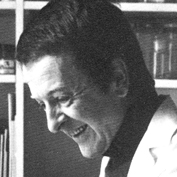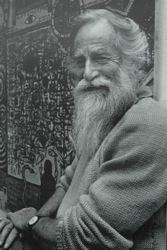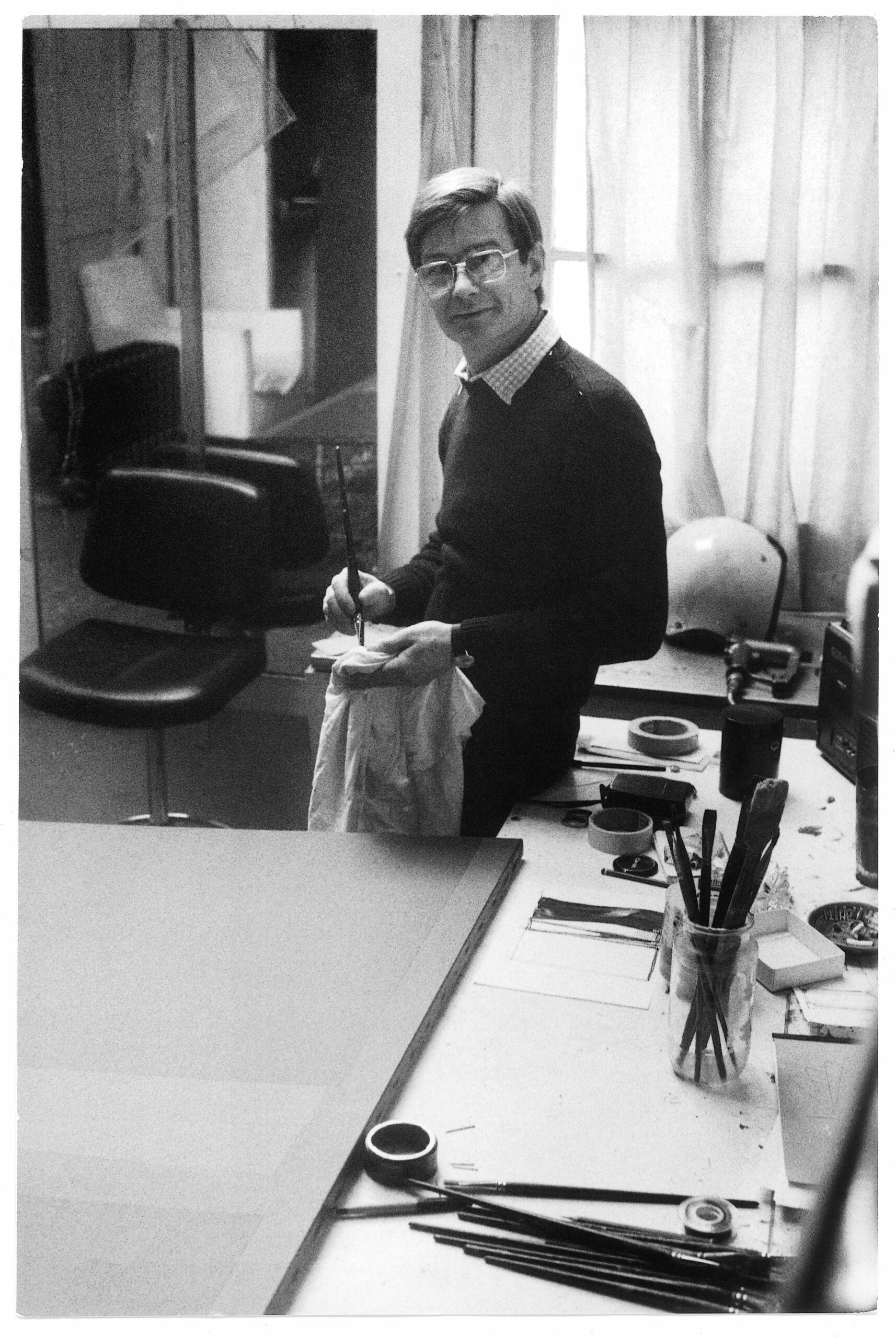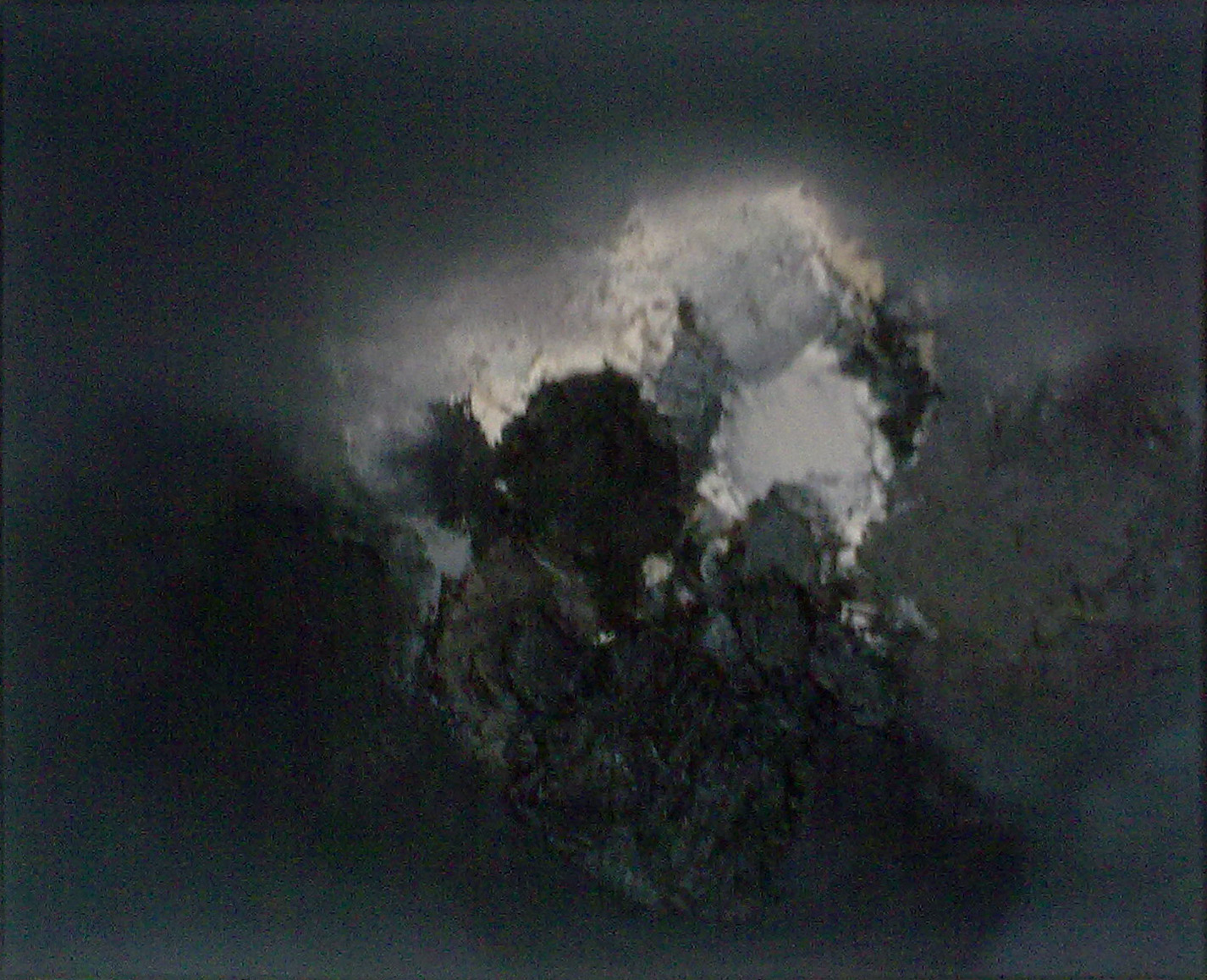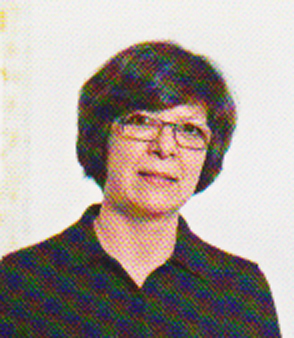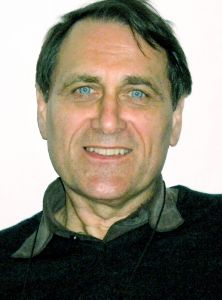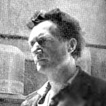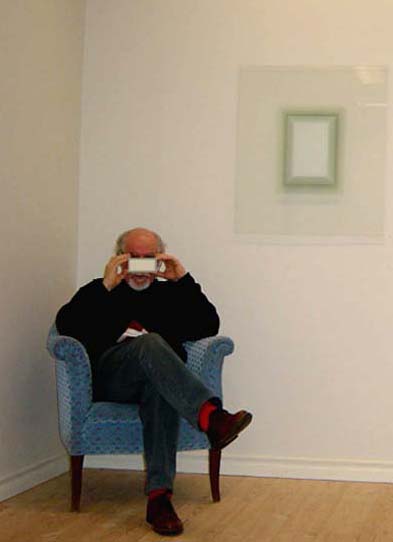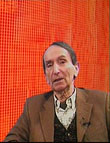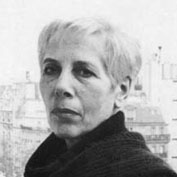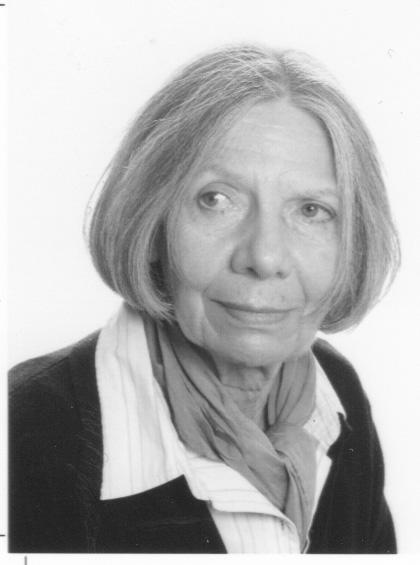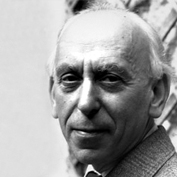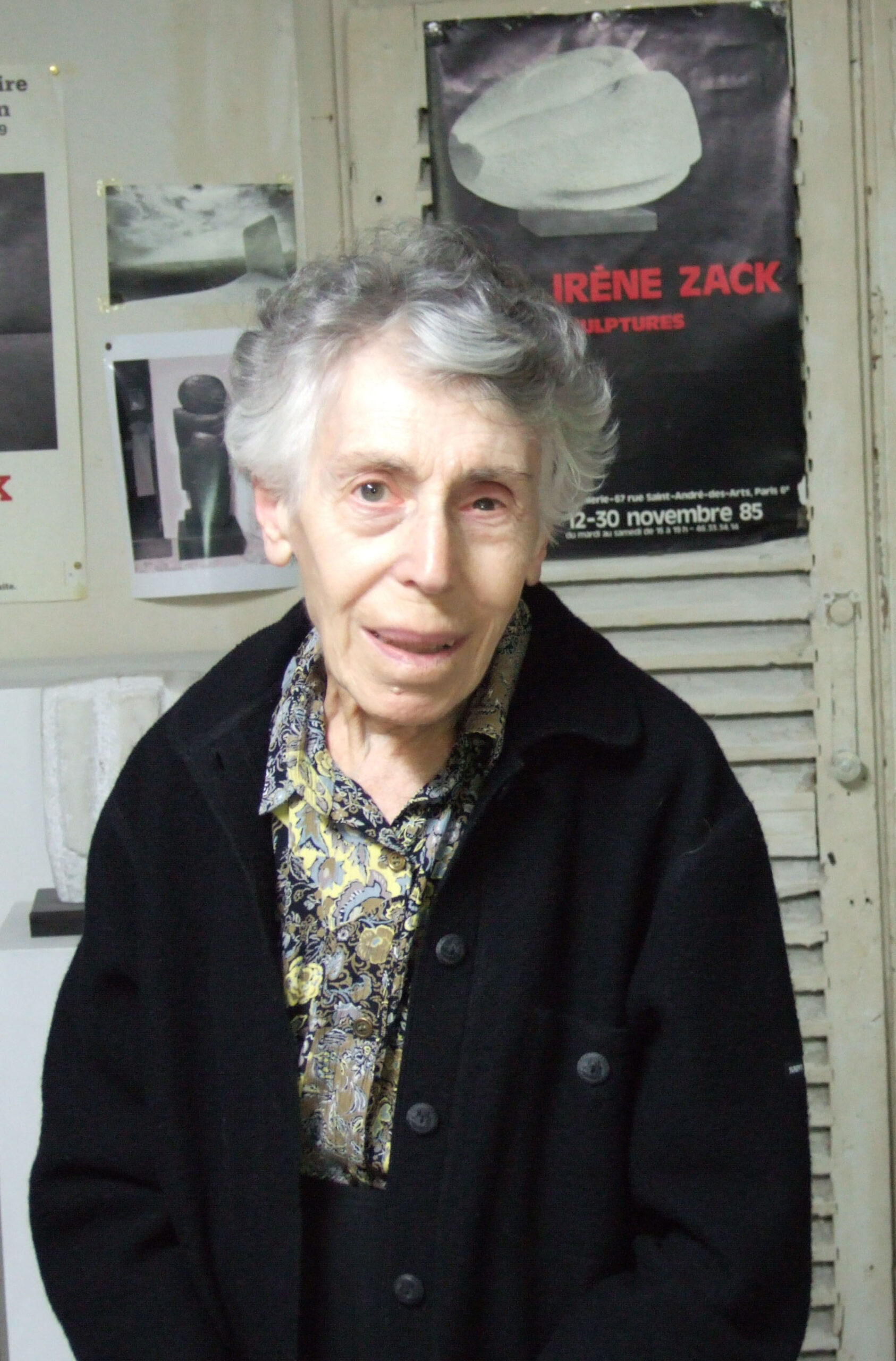Exhibitions
Coming soon / Now / Past
Guy de Lussigny : parcours italien
20 November 2010 – 8 January 2011
“A mystery reigns around Guy de Lussigny’s paintings. Like the whispered testimony of an inner adventure, almost a mystical experience. He only needs to decline the simplest geometric form – the square – and play on the most imperceptible chromatic oppositions, to expand his pictorial works, to raise them to the rank of a true universe, where it is less a question of picking, of seeking happiness elsewhere, than of meditating, of finding oneself”.
Frédéric Vitoux, of the Académie Française, who was a great friend of Guy de Lussigny, wrote this text on the occasion of our 2007 exhibition.
Guy de Lussigny’s painting, sober and precise, is of great poetry. In 1996, the Institut de France, Académie des Beaux-Arts awarded him the Dumas-Millier Prize.
His works are present in the public collections of many museums: Valenciennes, Montbelliard, Mâcon, the Calderara Foundation, the Fnac, the Frac Ile de France, the Mondriaanhuis in Amersfoort (NL), the Tavet Museum in Pontoise, the Matisse Museum in Câteau-Cambrésis, and especially at the Cambrai Museum with 119 works from the donation of André Le Bozec, a great collector and patron. Parcours italien presents paintings on wood as well as gouaches and watercolors on paper made between 1975 and 1985, years during which Lussigny made many trips to Italy and became friends with Antonio Calderara. Our exhibition takes place in parallel with the major retrospective that the Cambrai Museum is showing him with its exhibition ‘Color through time’ Retrospective 1952-2001 from October 23, 2010 to February 6, 2011.
Artist exhibited :
Guy de Lussigny.
Alan Davie: Alan paints for a film
19 October – 18 November 2010
Alan Davie is a painter, musician and poet all rolled into one. The gimpel & müller gallery is celebrating the 90th birthday of this Scottish artist, universally recognised and exhibited, exceptional both for his creative longevity and his ever-unquenchable curiosity. The central work of this exhibition is a painting painted in 2009 in front of Fabrice Grange’s camera, entitled “Alan paints for a film”. Alan Davie has constantly nourished his work with permanent reflection. In his thesis “Towards a philosophy of creativity”, published in 1997 (source: Scottish National Gallery of Modern Art & University of Brighton Gallery, Edinburgh and Brighton), Davie spoke of the need to leave aside material concerns in order to attempt a return to nature by freeing oneself from external anxieties. Throughout his life Alan Davie has wanted to immerse himself in this hidden, inner and mystical world where he finds the sources of his art. This incessant search has often led him to change direction and style. But if his work has maintained a strong unity, Alan Davie has never been afraid to experiment. The forms and structures of his compositions have evolved a lot since the 50s or 70s. The desire to penetrate intimate emotions and to search strong sensations (he flew for years on board gliders) to reveal hidden truths has been the goal of his life. Davie has always had faith in his need to transcend his doubts and anxieties through painting.
Clear figures, geometric shapes, esoteric symbols, written words and numbers, dynamic colors … Davie’s painting transmits an overflowing energy and retains its exuberance as lively as ever … It is because it is all imbued with the forms of expression that have been used, over the ages and all around the planet, by mystical research, alchemy, magic, shamanism. We find them as reminiscences: Tibetan prayer wheels, crescent moons, Shiva and the serpent, geometric creations of the Hopi Indians… In Alan Davie, they take on a universal meaning. As if all the philosophies and poetry of the World, of all the Worlds, came to illuminate the mystery of his creations.
Artist exhibited :
Alan Davie.
Antoine de Margerie :peintures et œuvres sur papier
16 September – 16 October 2010
The figures borrowing from the pure forms of geometry their rigorous outline adopt fan movements to shift their presence, admit intersections, suggest superpositions that energize the compositions. The use of colored bands opposite a compact form, slight cutouts altering the exact figure of a square always give more depth to the pictorial space by complicating the play of colors. Everything seems to want to produce a slow but flexible rhythm, as if the treatment of the painting through this abstraction introduced the feeling of having to deal with a living organism, endowed with its own laws.
The artist imagines subtle cameos, or breaks a monochrome orientation with a color that suddenly seems to brutalize a balance.
Anne Tronche, excerpt from the monograph Antoine de Margerie, Peintures et gravures published by éditions du Regard on the occasion of the exhibition
Artist exhibited :
Antoine de Margerie.
appartement d’un collectionneur
21 July – 12 August 2010
The gallery recreates for one summer the apartment of an art and design collector from the last century. A lounge area with table, armchairs and ottoman designed by Mies Van der Rohe for the German pavilion at the Universal Exhibition in Barcelona in 1927, further on, his legendary ‘MR10’ and ‘MR20’ chairs designed the same year. A ‘Chromatic Induction’ rug by Cruz-Diez separates them from a series of chairs by Friso Kramer around a table by Charles Ramos. A few lights by Gae Aulenti, Pierre Folie…, vases by Kosta Boda and Kastrup Glas. Among the sculptures, a superb unique piece by Marino di Teana from 1965, neon lights by Roger Vilder, a plexiglass column by Daniel de Spirt, a wood by Irène Zack and a cast bronze Susse by Henri-Georges Adam. On the walls, works by Luis Feito, Carlos Cruz-Diez, Joe Downing, Ivan Contreras-Brunet, Eve Gramatzki, James Guitet, Robert Currie, Guy de Lussigny, Werner Graeff, Knut Navrot and Victor Vasarely. A varied and coherent ensemble.
Robert Currie: œuvres abstraites récentes
12 June – 14 July 2010
To create his worlds, Robert Currie uses unusual materials: nylon threads, magnetic tape, wire mesh, Plexiglas boxes… and techniques that are both meticulous and inherently random.
His mathematical precision and penchant for the uncontrollable reveal complex attempts to control chaos. He oscillates between two contradictory theories: that of chaos – order inevitably arises from disorder – and that of complexity – order will emerge from any elaborate system. The result is a vibrant work, combining the rational and the irrational, the negative and the positive, order and disorder, full and empty.
Artist exhibited :
Robert Currie.
karin radoy : peintures-volumes & daniel de spirt : sculptures
11 May – 10 June 2010
Meister Eckhart von Hochheim said: “To perceive color, the eye must be freed of all colors.” Emptiness is the condition for understanding abundance. Yet another of the many dualities of the human condition. Our entire life is a dynamic interaction. In her works, Karin Radoy pushes this duality to the extreme, involving the viewer in an intense communication, thus becoming part of the work.
Daniel de Spirt belongs to this line of creators who give to see and feel, by building objects whose sensations allow us to question ourselves on visual perception, on our representation of the world, and because they contradict each other force us to relativize and refine our vision and our conceptions.
Gérard Masson, August 2000
Gérard Masson, août 2000
Artists exhibited :
Karin Radoy, Daniel de Spirt.
Henri-Georges Adam, dessins, gravures & sculptures
15 April – 8 May 2010
Weaver, sculptor, designer, engraver, Adam now has all his techniques at his disposal, which he will sometimes later attempt to synthesize: thus in his chiseled and cut coppers and, even more, in the bronzes and stones that he covers with engraved signs, as his Breton ancestors had once done with such menhirs. Most often, however, he does not seek to marry the different arts that he practices, conscious of their specificity. He is content to lead them, so to speak, in the same direction and with the same step: a slow, serious and sure step, which constantly progresses towards an increased grandeur and an increase in simplicity.
Achieving intensity through stripping down, grandeur through simplicity, and fullness through rudimentary, it is an example of health, grandeur, and authenticity that Adam offers to our era, at the same time as he teaches us the path to access these qualities, these privileges: to have the audacity, despite fashions, and the generosity, to be proudly, to be humbly, oneself.
Bernard Dorival, Extract from the preface of the Adam exhibition catalogue, Musée National d’Art Moderne de la ville de Paris – 1966
Artist exhibited :
Henri-Georges Adam.
René Guiffrey
16 March – 10 April 2010
Governed by optical laws and by spatial relations obeying a specific syntax, transparency seems curiously to materialize the invisible. It is therefore not surprising that a few artists, few in number, during the 20th century, have asked themselves the question of this invisible. René Guiffrey, taking this questioning to the extreme, made it the basis of his vocabulary by choosing to work glass in variable thicknesses and most often in the format of the square.
The active sensitivity of this material with regard to light led him to design works inseparable from a revealing. Whether they are treated in volume or intended for murality, whether the glass plates are simply attached to each other or lightly coated with an acrylic primer, they appear as a meditation on the conditions of the visible. A meditation, which captures an inner emotion in the balance of forms, in the tiniest visual disturbances, in the proportions of compositions varying a small number of parameters. Concentration, rhythm, feeling, qualify this work which, despite its concerted nature, reveals that a place is most often kept for the unexpected. If the works of René Guiffrey vibrate, radiate, with such ease it is because their model calls from within. They represent nothing: they are obvious and a mystery.
Anne Tronche
Artist exhibited :
René Guiffrey.
Ivan Contreras-Brunet, reliefs mobiles
16 February – 16 March 2010
Chilean Contreras-Brunet is among the first to have superimposed and set linear structures in motion. He uses colored grids or grilles to visually pierce space and thus achieve a transparent color. His current works, moved either by the spectator or by the air, visually conquer space through the opposition of mobile and immobile elements.
Frank Popper, l’art kinetique. Gauthier Villars, Paris – 1970
Artist exhibited :
Ivan Contreras-Brunet.
Denise Lioté – peintures et pastels & Krochka – peintures et dessins
14 January – 13 February 2010
“… a dilated light that hollows out space, for an impalpable reality, a false monochrome, whose fluidity introduces its own laws of refraction. Faced with this quivering surface, similar to a swell on which the intervention of a range of pink, blue, or ochre and white introduces imperceptible simultaneous zones of shadow and light, our eye undertakes an exploration in a moment of internalized meditation…”
Lydia Harambourg, 2006, art historian, correspondent of the institute
“Our century has freed painting from the obligation to represent the world and has instead asked it to participate in the very existence of things. Thus some painters have endeavored to let their paintings take on the color of moss and walls… Surfaces where light puts itself to the test of materials, traces containing living messages… We have theorized a lot about abstraction as if it were a matter of pleading before judges. But perhaps the issue is only poetic: “to seek the gold of time”
Bernard Derrieu, 2006
Artists exhibited :
Krochka, Denise Lioté.
Léon Zack, peintures et Irène Zack, sculptures
26 November 2009 – 12 January 2010
Léon Zack is the painter of duality. Russian who became French, Jewish who became Catholic – I am thus an accomplished Jew, he liked to say – figurative who became abstract, Zack devoted his life to the search for a spirituality, a balance and a peace that he only achieved at the very end of his existence. All matter, all thickness had then disappeared from his paintings, leaving room for a diluted, refined, limpid painting, with vibrant, transparent colors, illuminated by a light from elsewhere. Zack externalized this clash of origins in his paintings with multiple knots. Knots that often evoke the Christian cross. The visible and the invisible coexist, just like gentleness and violence, light and darkness. These oppositions allow us to approach the universe of his research, of his faith. A Journey rich in emotions and discoveries.
galerie gimpel & müller
(…) At the intersection of cultures and plural aesthetic movements, Irène Zack’s sculpture has taken its place, with humility, but firmness. Her fascination for life, one and multiple, but always unpredictable, buried in matter awakened by loving hands, has led her work in a path whose authenticity cannot be denied. A commitment that simultaneously summons naturalism and symbolism, geometry and metaphor, for a timeless symbiosis with nature in communion with men.
Lydia Harambourg, monograph dedicated to Irène Zack, Ereme editions, 2008
Artists exhibited :
Irène Zack, Léon Zack.
